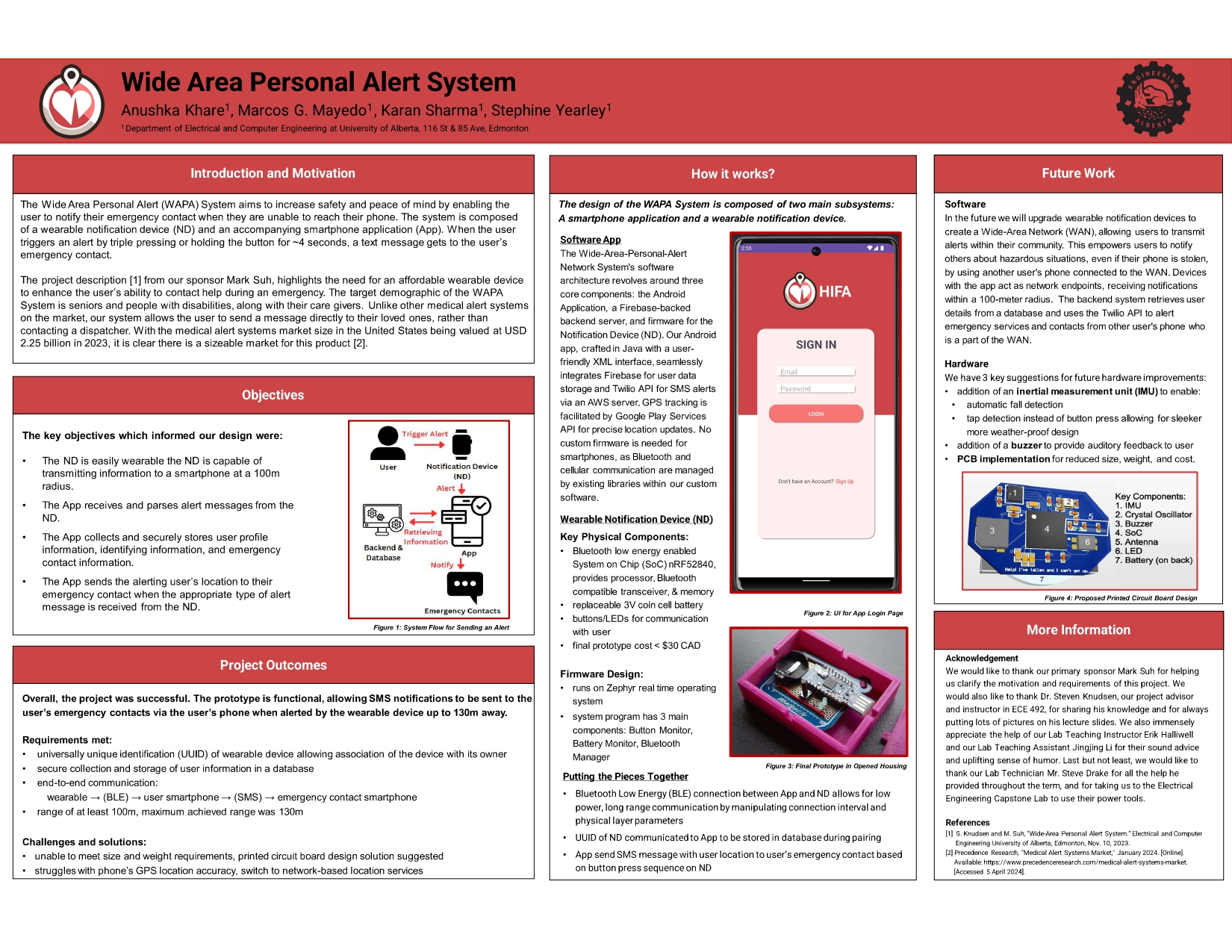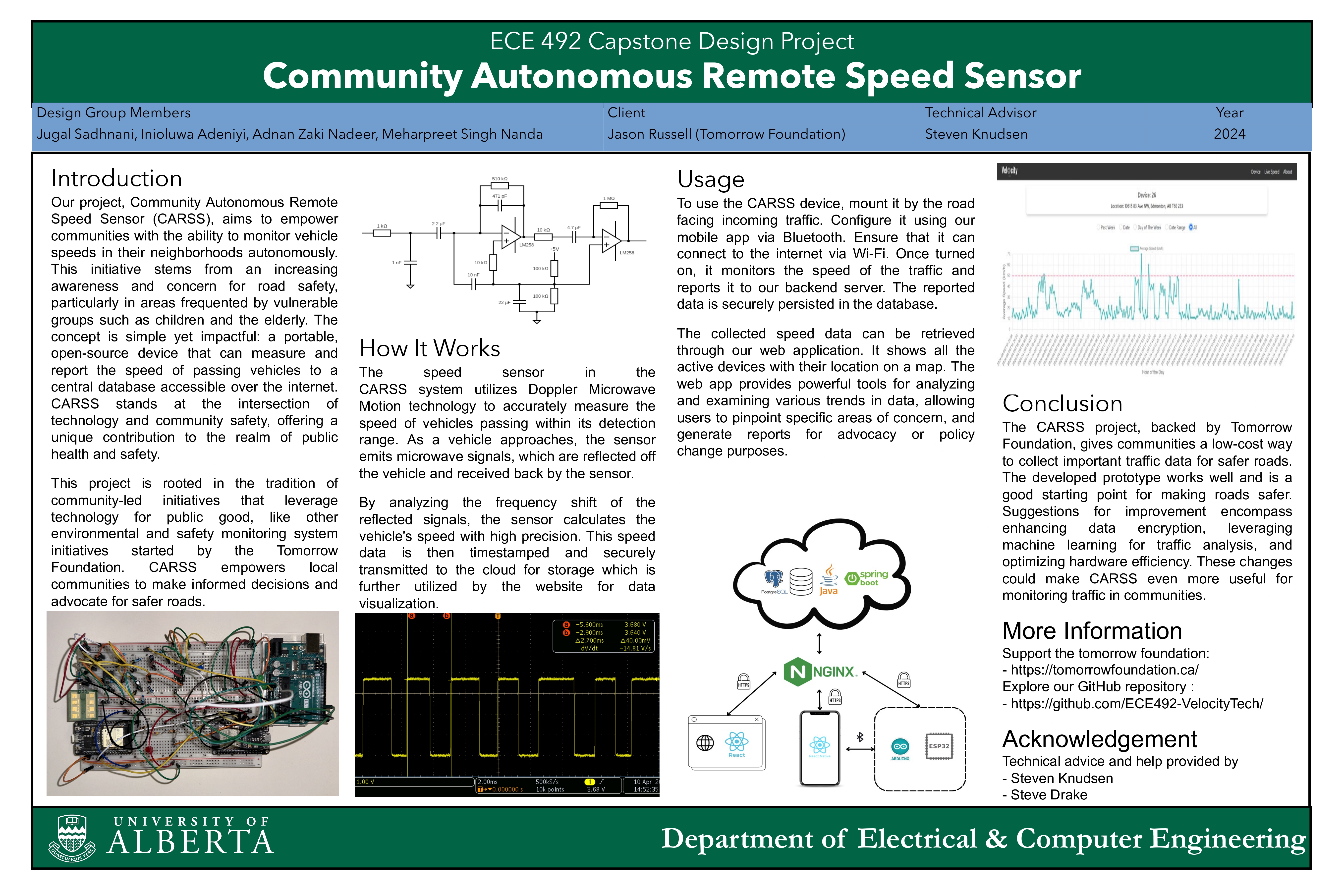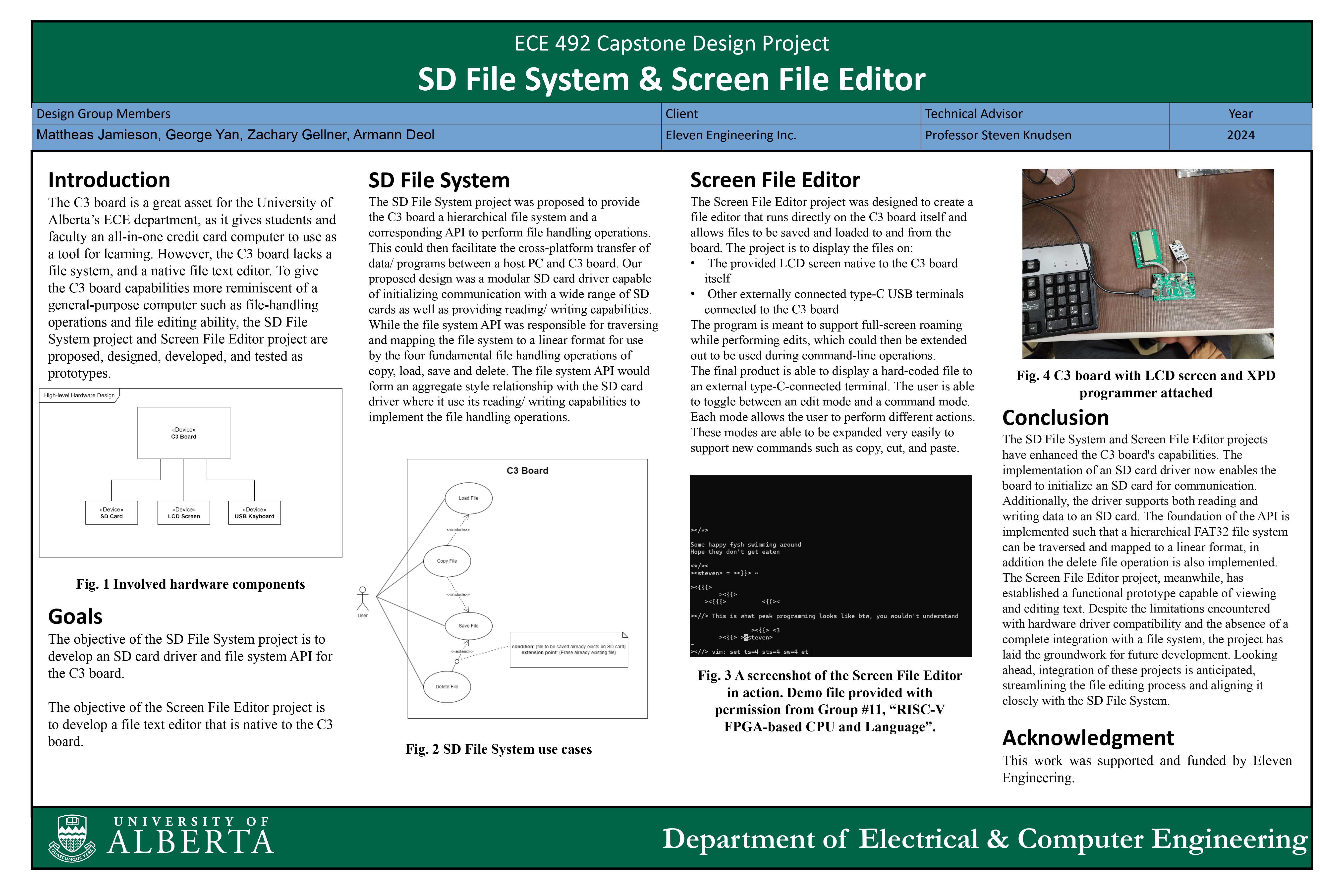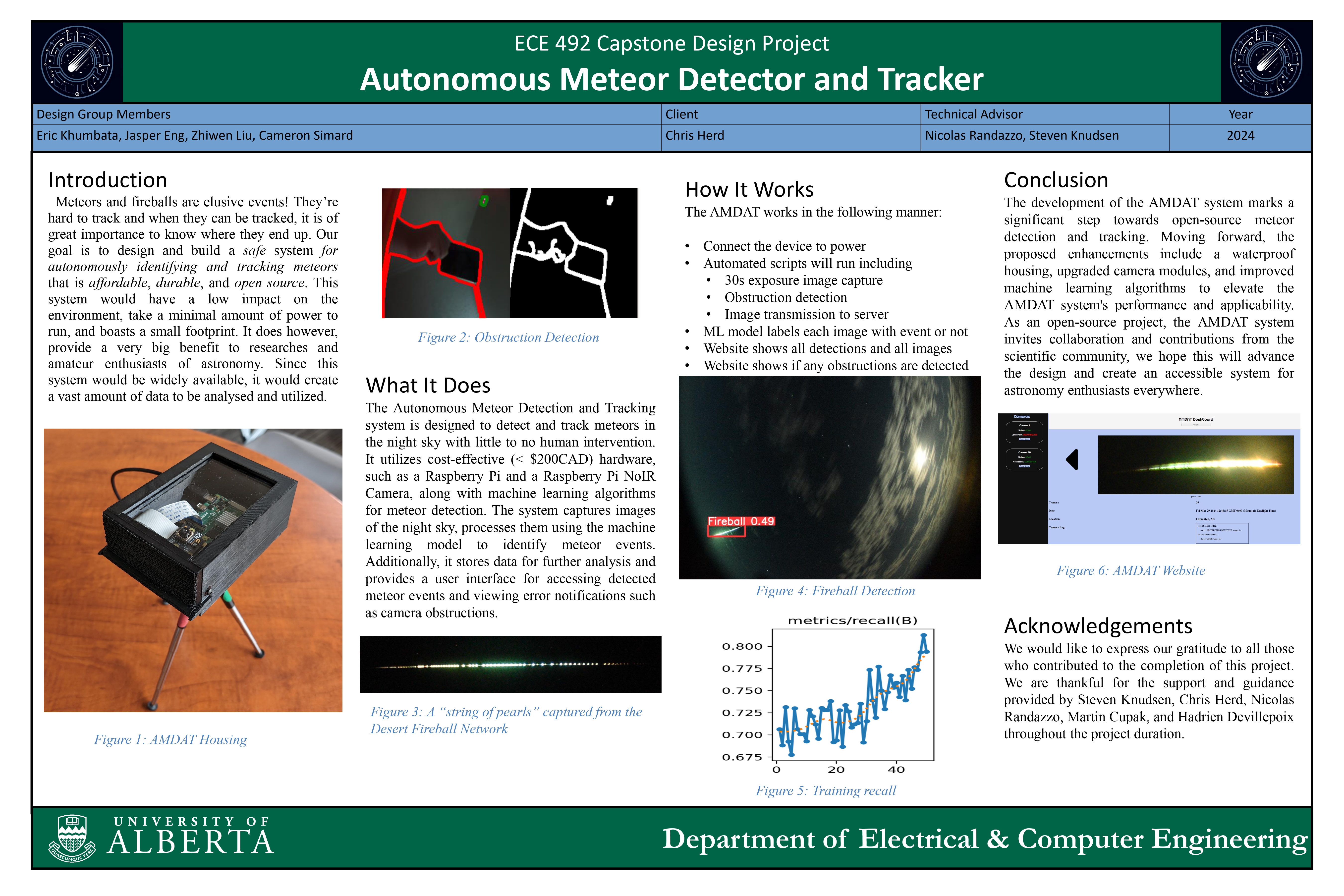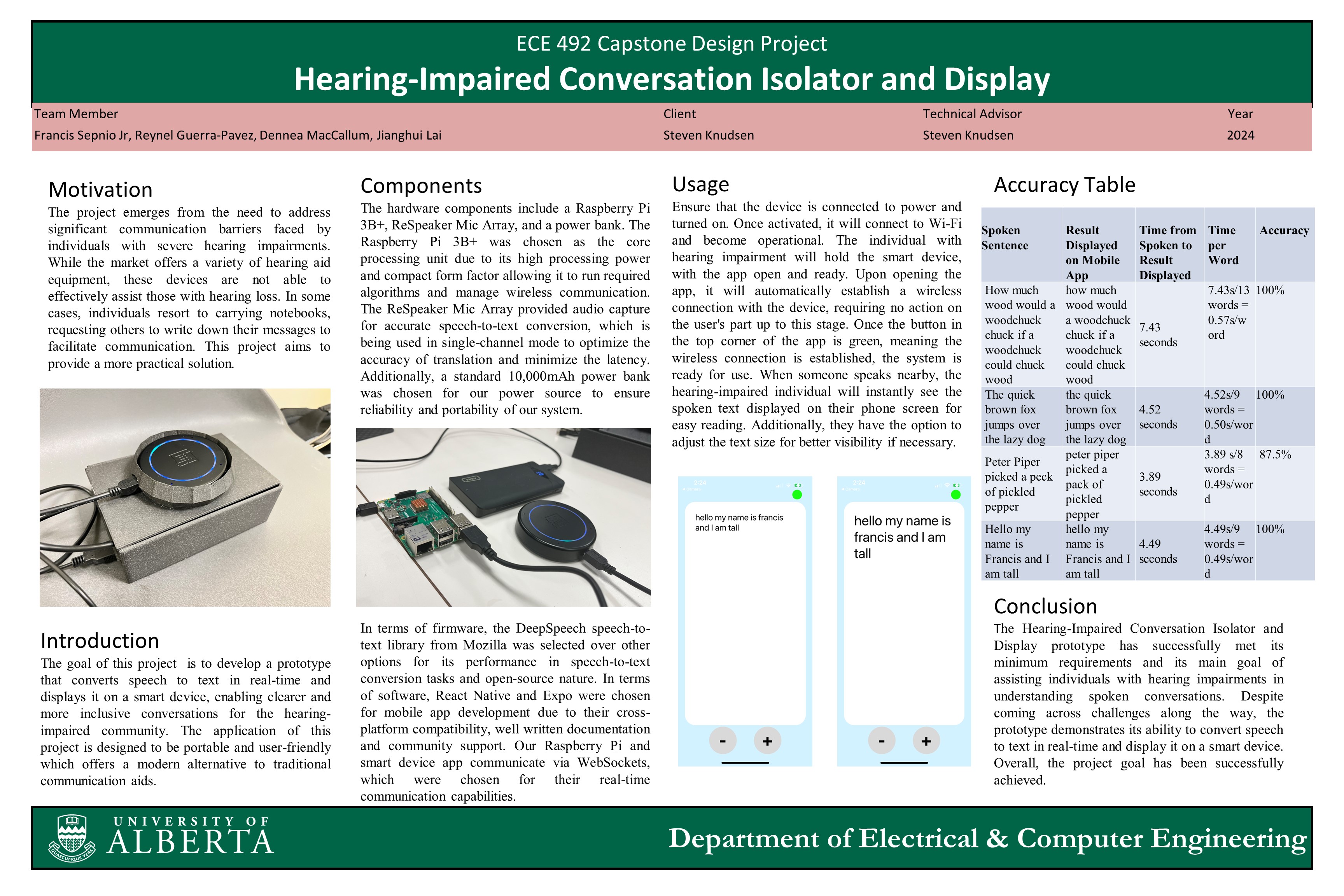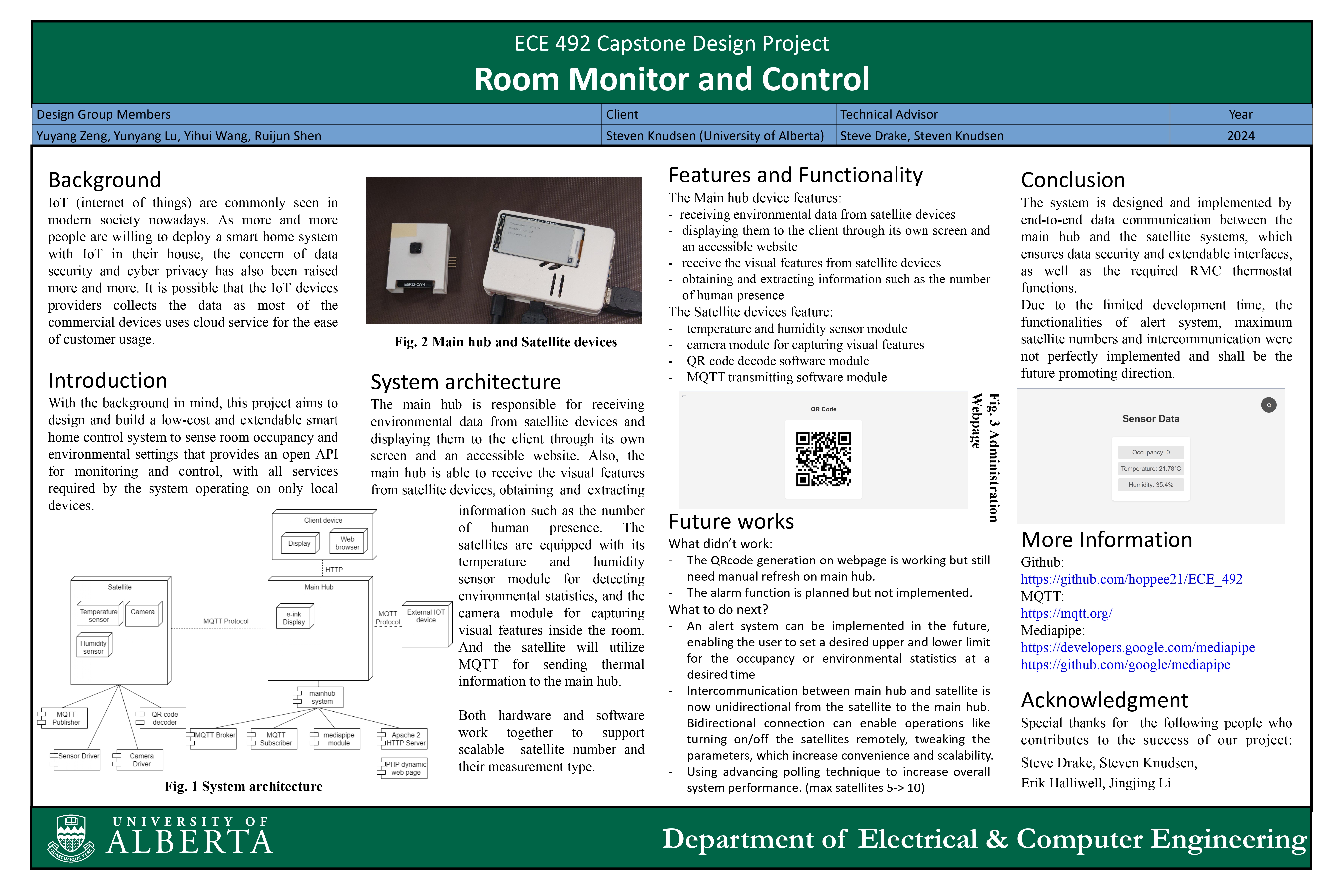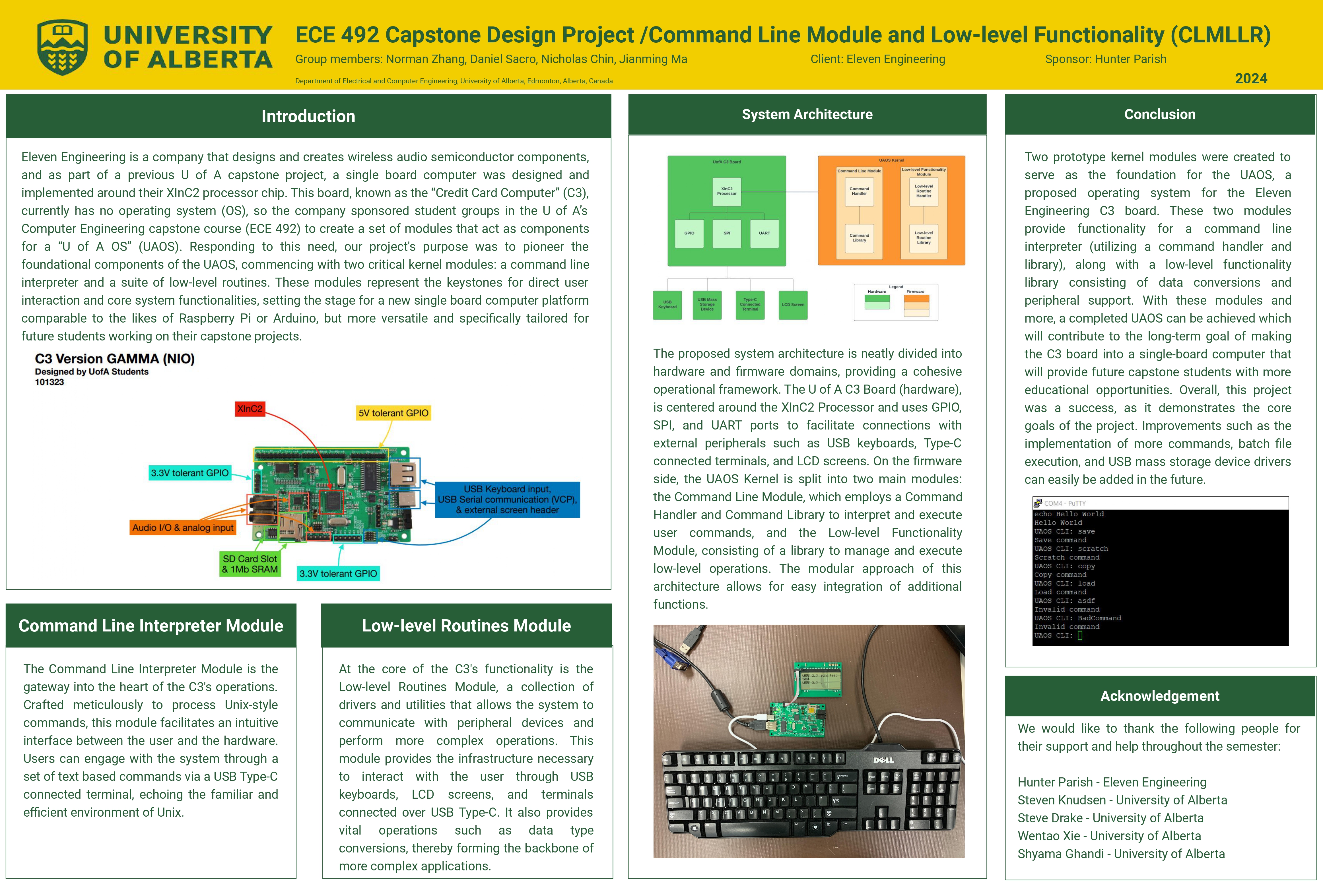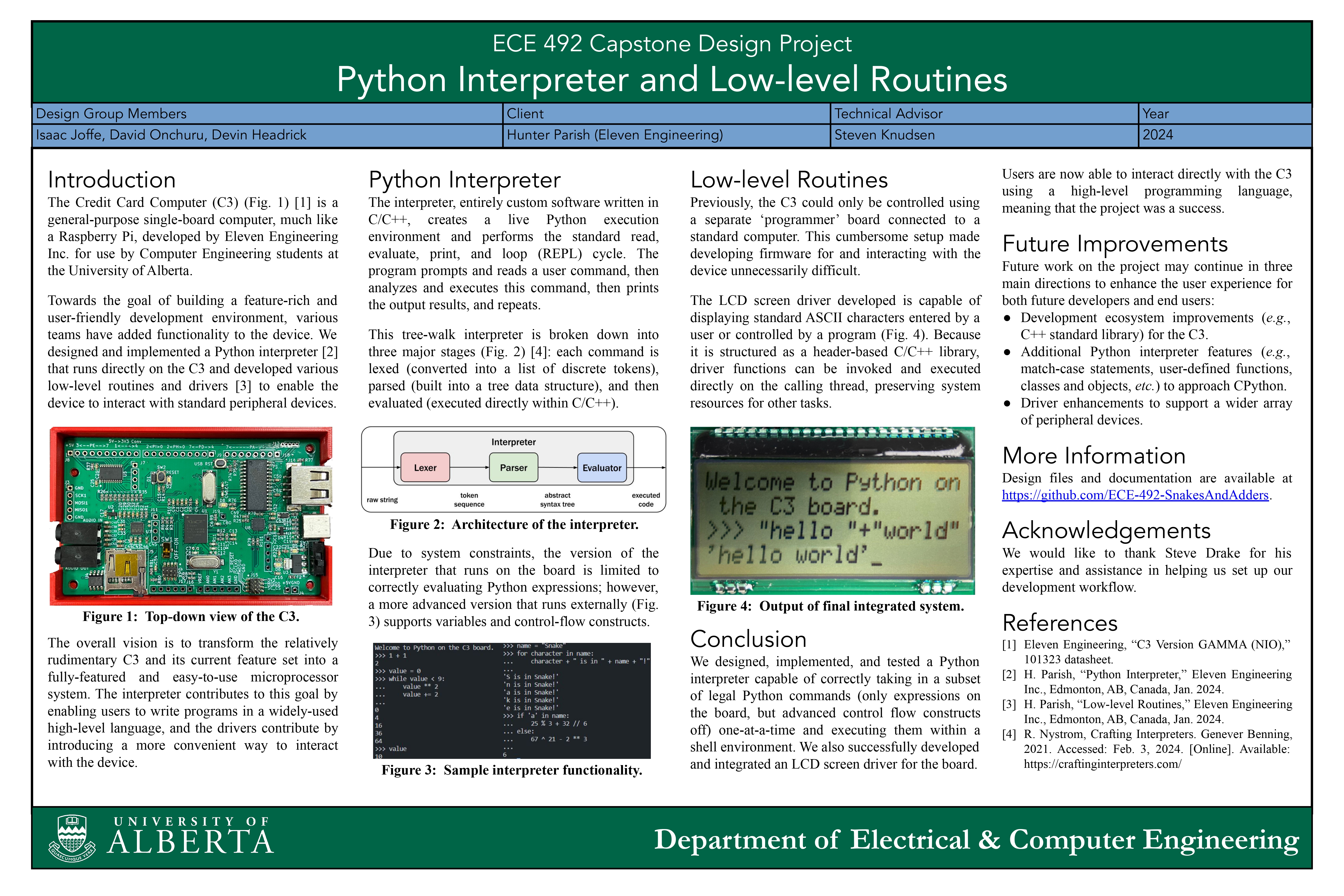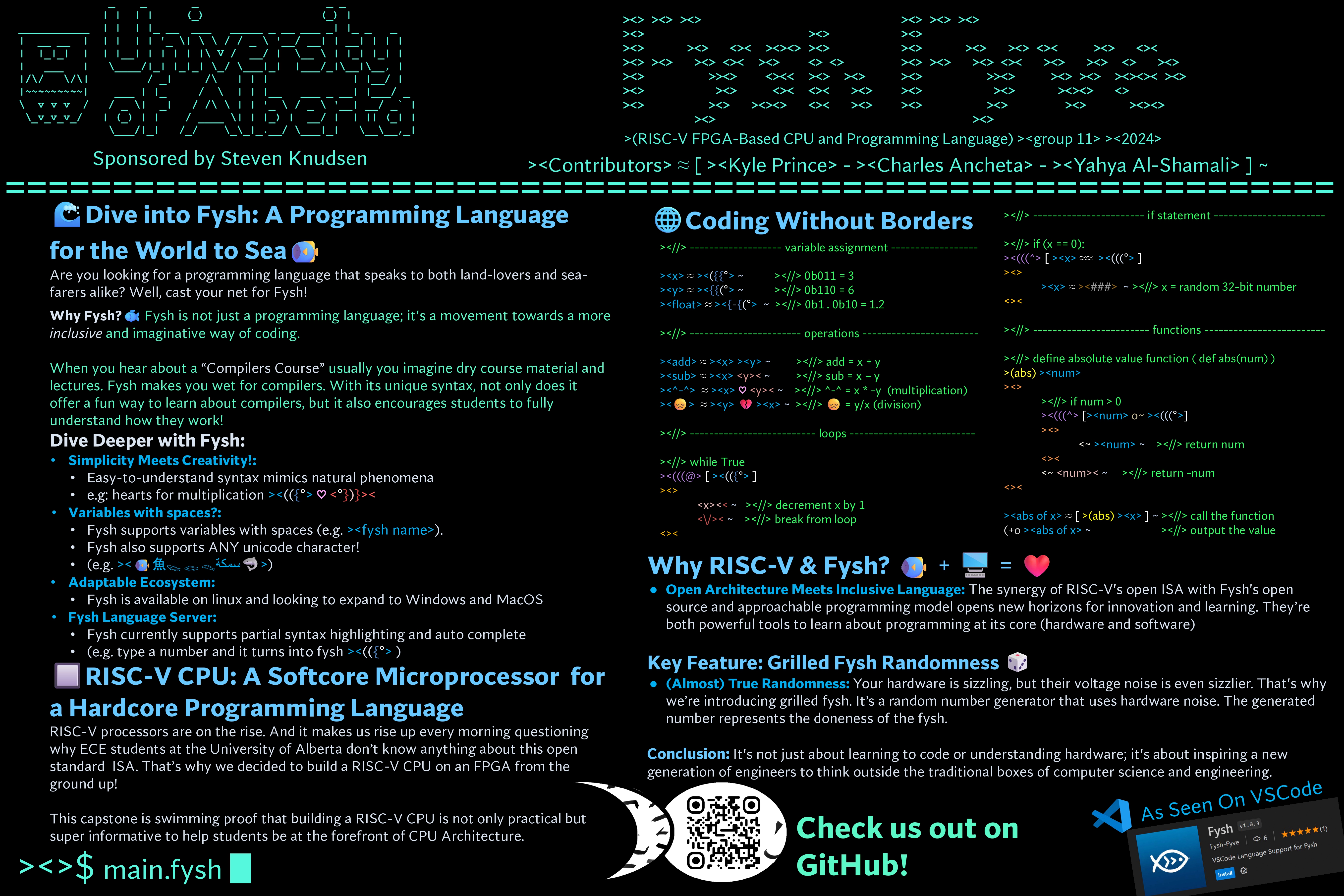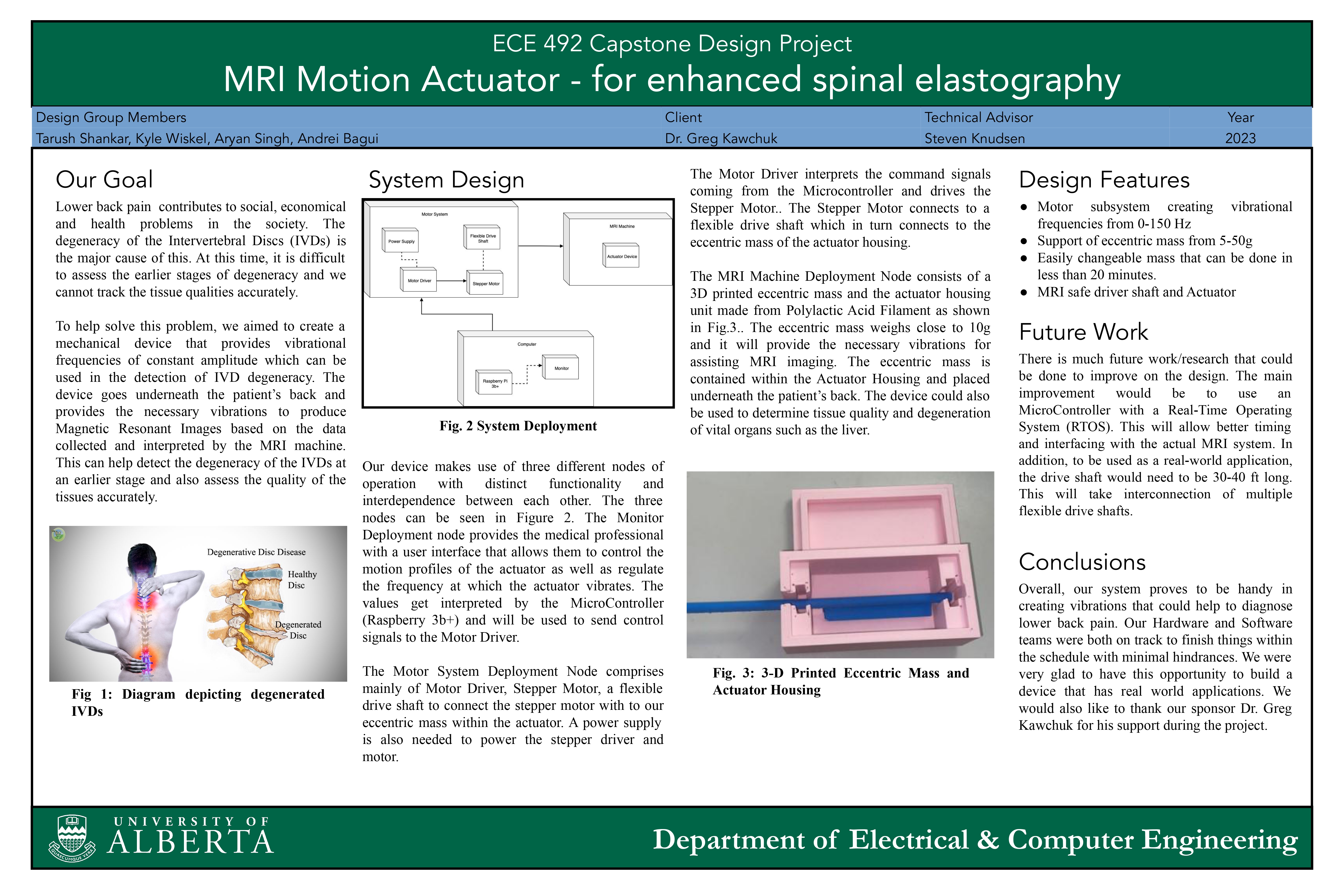Projects from the Department of Computer Engineering
Team Members: Anushka Khare, Marcos G. Mayedo, Karan Sharma, Stephine Yearley
The Wide Area Personal Alert (WAPA) System aims to increase safety and peace of mind by enabling the user to notify their emergency contact when they are unable to reach the phone. The system is composed of a wearable notification device and an accompanying smartphone app. When the user triggers an alert by triple pressing or holding the button for ~4 seconds, a text message gets to the user's emergency contact. The project description from our sponsor, Mark Suh, highlights the need for an affordable wearable device to enhance the user's ability to contact help during an emergency. The target demographic of the WAPA System is seniors and people with disabilities, along with their care givers. Unlike other medical alert systems on the market, our system allows the user to send the message directly to their loved ones, rather than contacting a dispatcher. With the medical alert systems market size in the United States being valued at USD 2.25 billion in 2023., it is clear there is a sizeable market for this product
Discipline:Computer Engineering
Team Members: Jugal Sadhnani, Inioluwa Adeniyi, Adnan Zaki Nadeer, Meharpreet Singh Nanda
Our project, Community Autonomous Remote Speed Sensor (CARSS), aims to empower communities with the ability to monitor vehicle speeds in their neighborhoods autonomously. This initiative stems from an increasing awareness and concern for road safety, particularly in areas frequented by vulnerable groups such as children and the elderly. The concept is simple yet impactful: a portable, open-source device that can measure and report the speed of passing vehicles to a central database accessible over the internet. CARSS stands at the intersection of technology and community safety, offering a unique contribution to the realm of public health and safety. This project is rooted in the tradition of community-led initiatives that leverage technology for public good, like other environmental and safety monitoring system initiatives started by the Tomorrow Foundation. CARSS empowers local communities to make informed decisions and advocate for safer roads.
Discipline:Computer Engineering
Team Members: Mattheas Jamieson, George Yan, Zachary Gellner, Armann Deol
The C3 board is a great asset for the University of Alberta’s ECE department, as it gives students and faculty an all-in-one credit card computer to use as a tool for learning. However, the C3 board lacks a file system, and a native file text editor. To give the C3 board capabilities more reminiscent of a general-purpose computer such as file-handling operations and file editing ability, the SD File System project and Screen File Editor project are proposed, designed, developed, and tested as prototypes.
Discipline:Computer Engineering
Team Members: Eric Khumbata, Jasper Eng, Zhiwen Liu, Cameron Simard
Meteors and fireballs are elusive events! They’re hard to track and when they can be tracked, it is of great importance to know where they end up. Our goal is to design and build a safe system for autonomously identifying and tracking meteors that is affordable, durable, and open source. This system would have a low impact on the environment, take a minimal amount of power to run, and boasts a small footprint. It does however, provide a very big benefit to researches and amateur enthusiasts of astronomy. Since this system would be widely available, it would create a vast amount of data to be analysed and utilized.
Discipline:Computer Engineering
Team Members: Francis Sepnio Jr, Reynel Guerra-Pavez, Dennea MacCallum, Jianghui Lai
The project emerges from the need to address significant communication barriers faced by individuals with severe hearing impairments. While the market offers a variety of hearing aid equipment, these devices are not able to effectively assist those with hearing loss. In some cases, individuals resort to carrying notebooks, requesting others to write down their messages to facilitate communication. This project aims to provide a more practical solution.
Discipline:Computer Engineering
Team Members: Yuyang Zeng, Yunyang Lu, Yihui Wang, Ruijun Shen
IoT (internet of things) are commonly seen in modern society nowadays. As more and more people are willing to deploy a smart home system with IoT in their house, the concern of data security and cyber privacy has also been raised more and more. It is possible that the IoT devices providers collects the data as most of the commercial devices uses cloud service for the ease of customer usage.
Discipline:Computer Engineering
Team Members: Norman Zhang, Daniel Sacro, Nicholas Chin, Jianming Ma
Eleven Engineering is a company that designs and manufactures wireless audio semiconductor components, and as part of a previous UofA capstone project, a single board computer utilizing Eleven’s XInC2 processor was designed and manufactured. This single board computer is known as the “Credit Card Computer” (C3), and currently has no operating system (OS), so the company wanted to implement one called the “UofA OS” (UAOS) by sponsoring UofA’s Computer Engineering capstone course (ECE 492) to create a set of modules that would act as the components for it. The complete version of the UAOS is desired to support a plethora of features such as a memory management unit, a secure digital (SD) file system, and a screen file editor to name a few. However, the main focus of our project was to simply implement only two UAOS kernel modules – one for a command line interpreter and another for various low-level routines.
Discipline:Computer Engineering
Team Members: Isaac Joffe, David Onchuru, Devin Headrick
The Credit Card Computer (C3) is a general-purpose single-board computer, much like a Raspberry Pi, developed by Eleven Engineering Inc. for use by Computer Engineering students at the University of Alberta. Towards the goal of building a feature-rich and user-friendly development environment, various teams have added functionality to the device. We designed and implemented a Python interpreter that runs directly on the C3 and developed various low-level routines and drivers to enable the device to interact with standard peripheral devices. The overall vision is to transform the relatively rudimentary C3 and its current feature set into a fully-featured and easy-to-use microprocessor system. The interpreter contributes to this goal by enabling users to write programs in a widely-used high-level language, and the drivers contribute by introducing a more convenient way to interact with the device.
Discipline:Computer Engineering
Team Members: Kyle Prince, Charles Ancheta, Yahya Al-Shamali
Are you looking for a programming language that speaks to both land-lovers and sea-farers alike? Well, cast your net for Fysh! When you hear about a “Compilers Course” usually you imagine dry course material and lectures. Fysh makes you wet for compilers. With its unique syntax, not only does it offer a fun way to learn about compilers, but it also encourages students to fully understand how they work!
Discipline:Computer Engineering
Team Members: Tarush Shankar, Kyle Wiskel, Aryan Singh, Andrei Bagui
This is a mechanical device that provides vibrational frequencies of constant amplitude which can be used in the detection of IVD degeneracy. The device goes underneath the patient's back and provides the necessary vibrations to produce Magnetic Resonant I mages based on the data collected and interpreted by that MRI machine. This could help detect the degeneracy of the IVDs at an earlier stage and also asses the quality of the tissues accurately.
Discipline:Computer Engineering
Explore
Explore projects from other disciplines!
